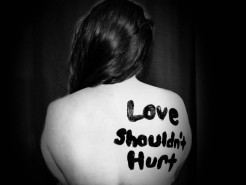 Domestic Violence Affects Both Women and Men
Domestic Violence Affects Both Women and Men
Contrary to common belief, up to 1 in 3 victims of sexual assault and at least 1 in 3 victims of family violence or abuse is male (Australian Bureau of Statistics, 2017).
In 2016, the Australian Bureau of Statistics conducted the largest and most recent survey on Violence in Australia. Here are some of their findings:
- A total of 6% of all males experienced violence compared to 4.7% of all females;
- About 35% of people who experienced violence from an intimate partner were male;
- Over 45% of people who experienced emotional abuse by a partner were male;
- Almost half of these males experienced anxiety or fear due to the emotional abuse (42.3%);
- Men were 2 to 3 times more likely than women to have never told anybody about experiencing partner violence;
- Men were 50% less likely than women to seek support about experiencing partner violence and 20% less likely than women to have contacted the police.
We also recognise that the domestic violence rates for both female and males are likely to under-report the true rate of domestic violence due to factors such as stigma, shame, safety concerns, or a historically narrow definition of domestic violence. These are only some of the reasons why it may also make it challenging for men to seek support when they are experiencing violence within their relationships.
What Are The Signs to Look Out For?
There is no single nationally or internationally agreed definition of domestic violence. While domestic violence has been historically measured across dimensions of physical abuse, more recent definitions additionally consider a wider range of controlling or intimidating behaviours.
The Family Law Act (1975) and Australian Bureau of Statistics now recognise a broader definition of domestic violence, which covers:
- Physical abuse (e.g. inflict physical injury, withhold resources to maintain health)
- Sexual abuse (e.g. coerced or forced into engaging in sexual acts without consent)
- Emotional and Psychological abuse (e.g. psychological trauma, undermine victim’s worth, isolate victim, instil fear)
- Verbal abuse (e.g. threats, taunting, stalking, intimidation)
- Economic abuse (e.g. withheld or controlled access to financial resources)
- Deprivation of liberty (e.g. confined or restricted freedom against the victim’s will)
- Exposing children to violence (e.g. direct or indirect violence towards children)
How Can I Keep Myself Safe?
- Assess immediate danger: If necessary, move to somewhere that is safe
- Seek support: If possible, talk to someone you trust and who can support you
- Contact the police: If you feel unsafe or need assistance, the police will be able to help
- Believe in yourself: Remember it is never okay to be hurt or threatened
- Know your rights: Legal rights vary between states, it may be useful to know yours
Where Can I Access Support?
MensLine: 24/7 Mensline providing telephone and online support and information for men regarding relationships and well-being. 1300 789 978.
DV Connect: 24/7 Womensline providing telephone support for women experiencing domestic or family violence. 1800 811 811.
Relationships Australia: Access a broad range of services including counselling, medication, and dispute resolution for individuals and
families. 1300 364 227.
LawStuff: Online resource dedicated to providing legal information for Australians, including laws relating to domestic violence by state. http://www.lawstuff.org.au/lawstuff
Medical Practitioners: Access support by your General Practitioner (GP) or discuss ongoing support by a mental health practitioner such as a psychologist.
References
- Australian Bureau of Statistics (2017). Personal Safety, Australia, 2016 (4906.0).
- Family Law Act 1975 (Australia).
